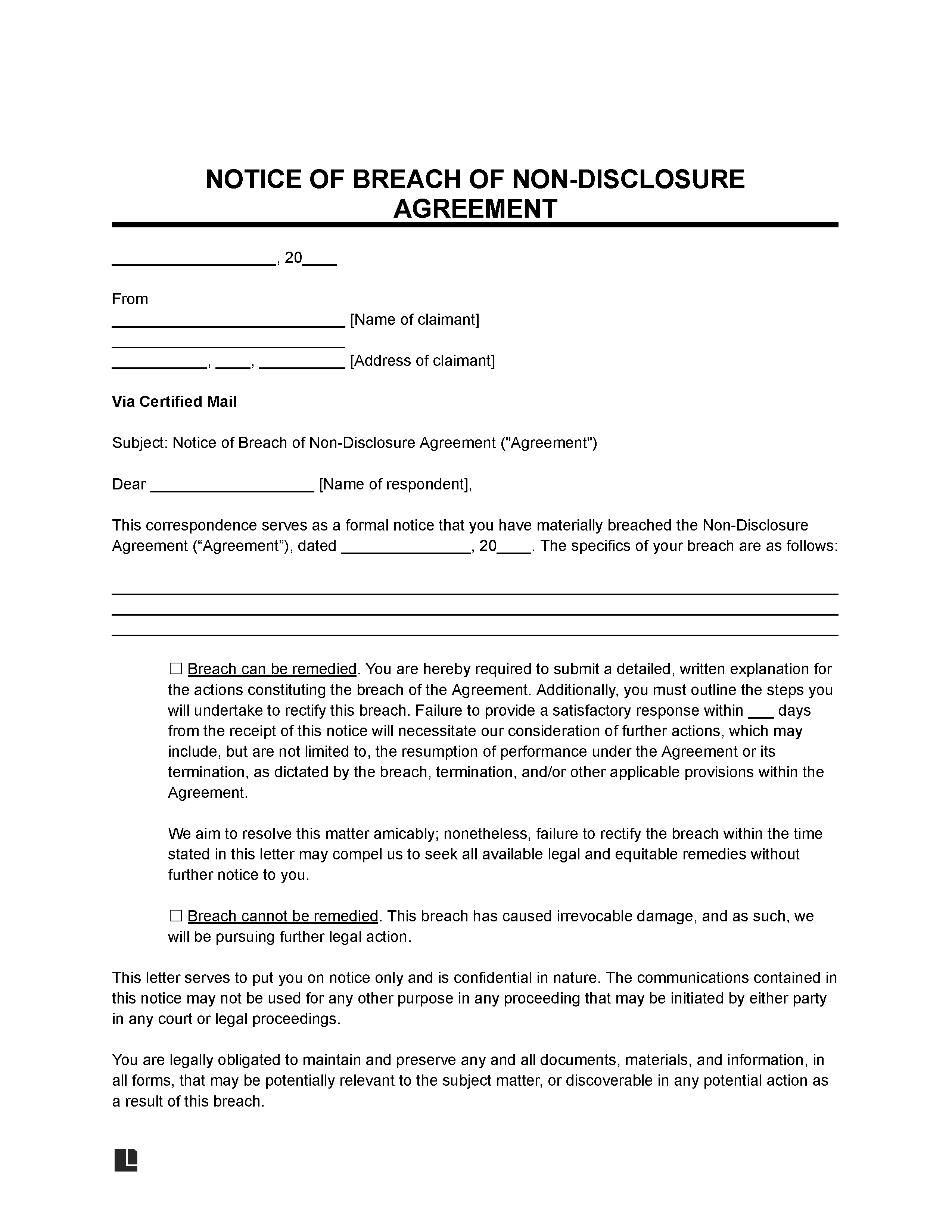A non-disclosure agreement (NDA) violation is a legal document signifying that a party has breached the terms of the NDA by disclosing confidential information to a third party. It serves as a formal request to the offending party, urging them to promptly stop the disclosure of confidential information, return any materials, and confirm their commitment to refrain from further disclosure.
Violating an NDA
When a breach happens, it means that someone has either shared or gotten hold of confidential information without permission. Breaches can occur in various forms:
- An employee or business partner shares confidential information with an outsider, who later announces it to the public, competition, or other unauthorized parties.
- A rival makes a tempting offer to hire your employee in return for your company’s trade secrets.
- A hacker manages to get their hands on trade secrets by hacking into a company’s computer system.
You can also take legal action for breaching fiduciary responsibility, infringing copyright, misappropriating trade secrets, or violating intellectual property laws.
What to Do After an NDA Breach
If the contractor has signed a non-disclosure agreement, there are several steps that can be taken in the event that they are found responsible for the breach:
- Thoroughly review the NDA to ascertain whether it contains provisions for addressing breaches. If the breach involves criminal activity, remember that NDAs cannot legally prevent you from reporting it. Read our article about this complex issue for a deeper dive.
- Conduct a comprehensive investigation into the breach, including determining its cause, identifying the information disclosed, and assessing the financial impact of the disclosure.
- Determine the appropriate legal recourse to seek compensation for the violation. In most cases, monetary damages can be demanded from the party at fault following an NDA breach.
How to Write a Violation of NDA Letter
Step 1 – Download the template as PDF or MS Word (.docx).
Step 2 – Begin by addressing the recipient formally and clearly stating the purpose of the letter.
Step 3 – Provide a detailed description of the NDA violation, including specific incidents and evidence.
Step 4 – Clearly state the consequences of the violation and the actions you expect the recipient to take.
Step 5 – Include a deadline for the recipient to respond or comply with your demands.
Step 6 – Close the letter with your contact information and a statement indicating your willingness to take legal action if necessary.
Make sure to include any relevant legal references in the letter and ask for materials back that may contain confidential information.

